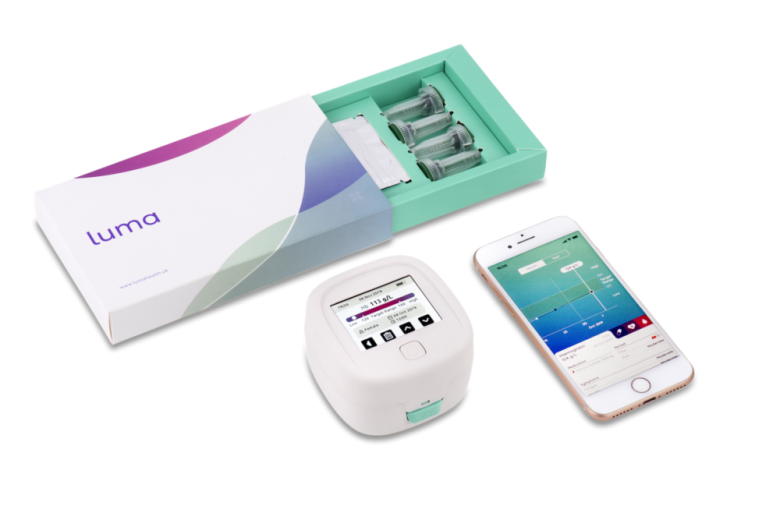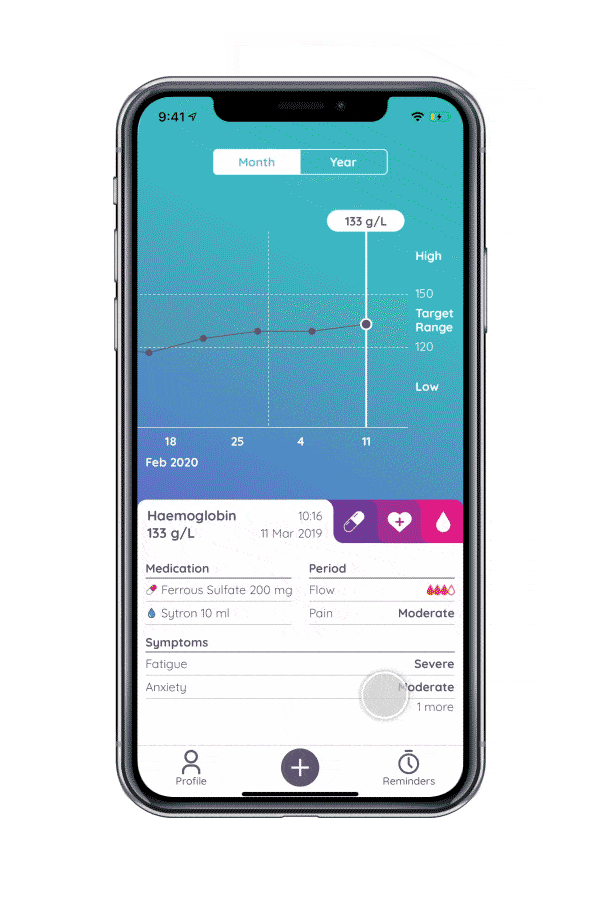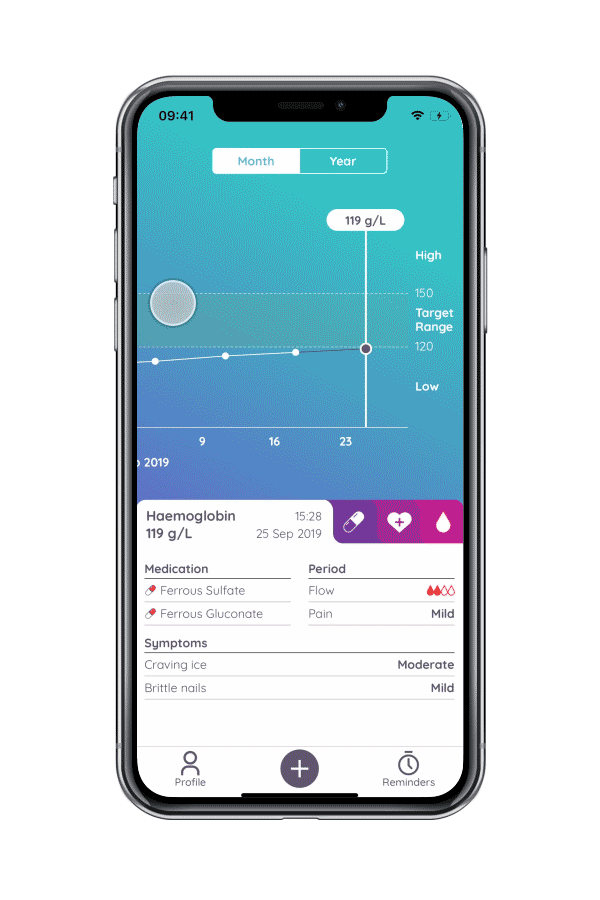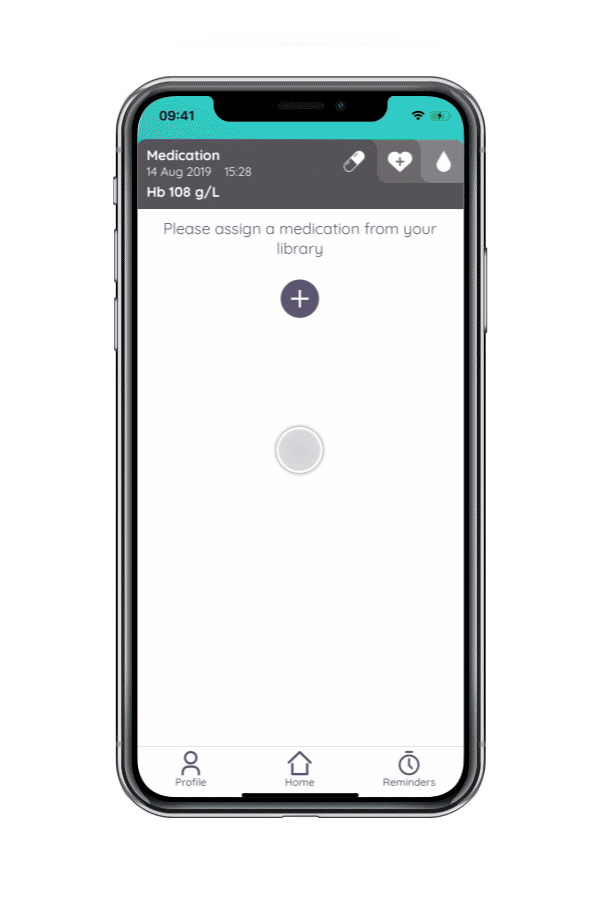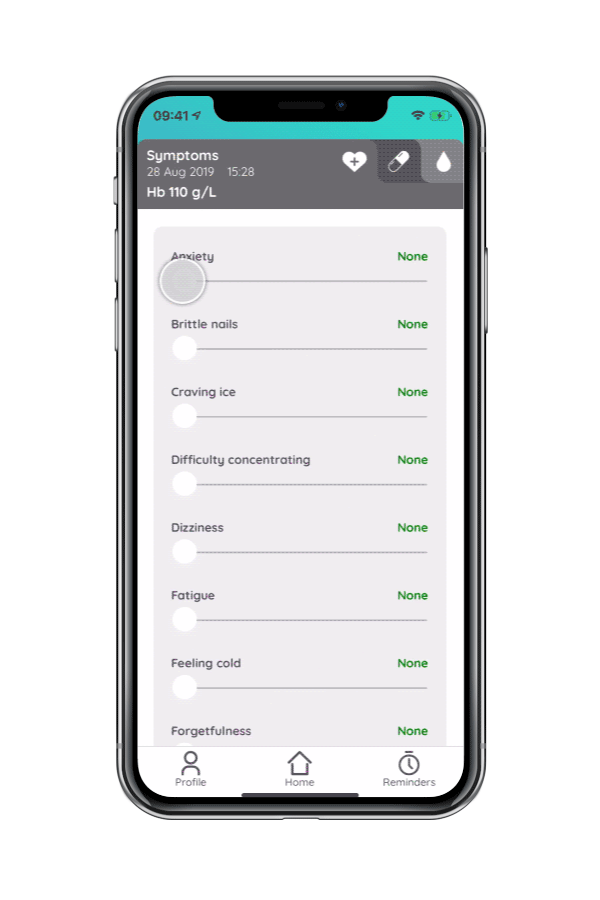
Luma
Luma is a device that empowers users suffering from anaemia to test their blood from home. Using a single drop of blood, a user can test their haemoglobin and track their results using a specifically designed app.
The brief
The brief was to develop a brand, app, and test kit to encourage users to use the Luma device and test regularly.
The team
3x Product designers, 1x Product manager. 1x Offshore engineering.
I worked on this project from discovery to development, helping craft the user experience and build the design system whilst also leading the visual development of the brand with the marketing team.
Discovery
On a 6-weekly schedule, we ran focus groups using discovery techniques to co-create with our target users. Initially, we ran card-sorting activities to understand their major pain points and had participants map their symptoms to us.
Initial concepts
Discovery helped establish that symptoms, period, and medication tracking were the key features we were going to develop alongside the results. Below are some of the initial designs we took to test with participants.
Design Development
After establishing the direction of our initial features, we started to map out a comprehensive experience that showcased all the user steps.
Brand and Packaging
Packaging and brand elements were also developed alongside the app. User feedback was crucial in understanding their behavior around the frequency of testing and handling consumables.
We brought a range of packaging concepts that tested different levels of fidelity. We tied the packaging concepts with brand identities and personas to communicate more defined ideas.
‘I don’t want to be reminded I’m ill every time I pick the box up. I preferred the options with softer curves as they felt a little bit more approachable and less medical than the other choices.’
Focus Group Participant ‘G.G’
Photography + Art direction
Developing a strong tone of voice and photography was key to brand development. We developed lifestyle photography to show users in their everyday environment, showing social situations with family and reflecting them using the product. This was developed in conjunction with a media agency.
Final Outcomes
Uploading Results
Luma was a Bluetooth-free device, meaning the user was asked to upload test results manually by scanning QR codes on the device.
We developed an on-screen tutorial overlayed on the camera view. This way, the user would have a guide on aligning the QR code with the phone camera.
Home Screen & Graphs
It was important for the user to visualise their journey over time as the treatment for haemoglobin deficiency can last for several months. Seeing trends in tests can help improve their understanding of anaemia management. Through testing, we found that a month and a year time scales were the suitable graph sizes.
The medication journal allowed users to create a new medication and specify strength, dosage, and frequency. These medications were recorded in a medication library that allowed the user to pick from a list of already created medications.
Medication Journal
With low haemoglobin came a series of symptoms and side effects. Therefore, symptom tracking was also a crucial feature for users to track their improvement of health.
Symptoms Journal
Our research also highlighted that one reason women have low haemoglobin could be linked to heavy periods. Therefore, period tracking was included to help develop a round picture of all three factors influencing user anaemia.
Period Journal
Brand Video
In collaboration with the brand team, I help with concept generation and art direction for the marketing video. The video aimed to engage with our core user group and drive traffic to the website. It resulted in 30% more traffic heading to the Luma Site.

